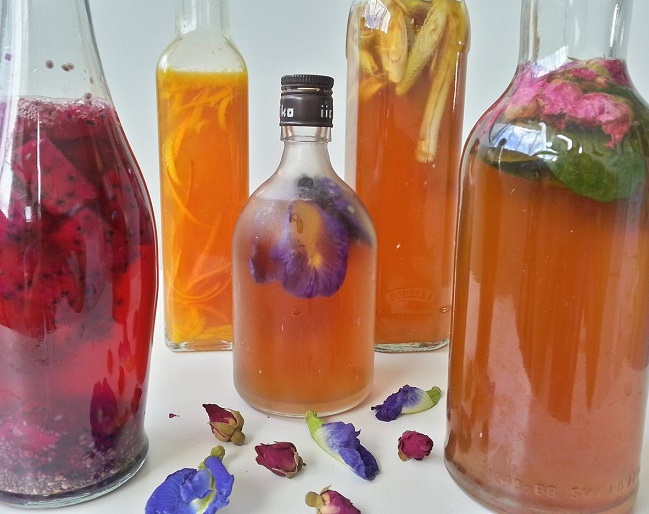
Brew Your Own Kombucha
By Yvonne Gilia
Kombucha is a natural, probiotic beverage made by fermenting black tea and sugar with a symbiotic culture of bacteria and yeast. The culture transforms sweet tea into a tantalising mildly effervescent drink. Kombucha is a healthy alternative to sweetened sodas as it is lower in sugar and void of artificial additives.
Total Time: 4-7 days
Difficulty: 2/5
Cost: < S$1.00
Yields: 1 litre
A: Basic Kombucha
2½ teaspoons loose black tea leaves or 2 tea bags, black tea
1 litre water, freshly boiled
50g sugar, white or unrefined cane sugar
125ml basic kombucha (starter tea)
1 scoby* (acronym for Symbiotic Culture Of Bacteria and Yeast)
B: Suggestions For Flavouring – 2nd Fermentation
Fresh fruit of your choice: 60g, peeled and chopped, or 60ml juice;
Dried edible flowers: 10 rosebuds or butterfly pea flowers; ½ teaspoon lavender;
Aromatics: 3 stalks lemongrass, white portion only, bruised; Thumb-size ginger or turmeric, peeled and chopped.
C: Tools
1.5 litre glass jar – sterilise by rinsing with hot water
1 litre glass jar – to store basic kombucha and scoby for subsequent brews
500ml or 750ml bottles, sterilised – for bottling kombucha
DIRECTIONS:
The kombucha brewing process comprises 2 phases: 1st fermentation (1F) and 2nd fermentation (2F). During 1F, sweet tea is inoculated with starter tea from a previous brew.
1. 1st Fermentation: Steep tea leaves or tea bags in boiled water for about 10 minutes. Using a tea filter, strain hot tea into a 1.5-litre glass jar. If using tea bags, discard them. Add in sugar and stir using a spoon till sugar dissolves. Allow sweet tea to cool down completely to room temperature.
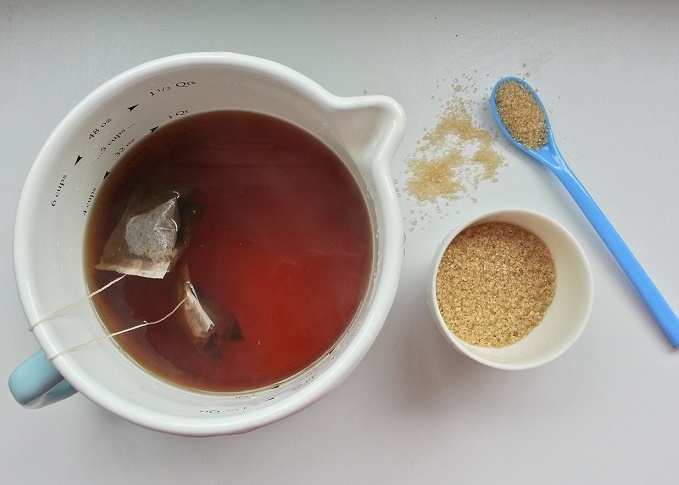
2. In fermenting jar, add starter tea and 1 scoby from scoby hotel*. Stir to mix it well. The culture consumes sugar in the tea. As tea ferments, it turns into basic kombucha which resembles sparkling apple cider.
3. Cover jar with a piece of paper towel/tightly woven kitchen towel/coffee filter. Secure with a rubber band. Mark start date as this allows you to keep track of the fermentation process.
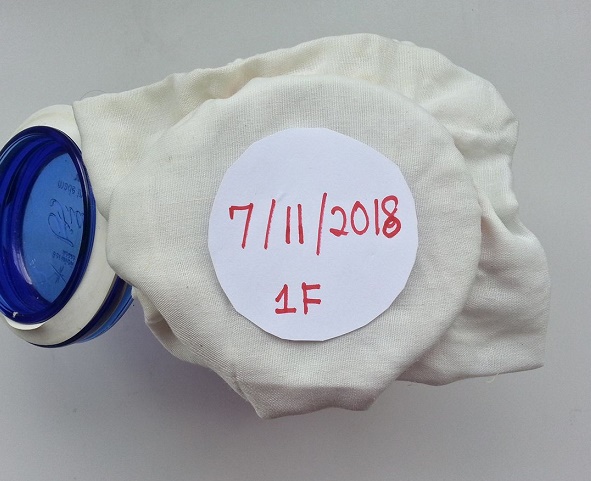
4. Leave the jar on the kitchen counter (at room temperature) away from direct sunlight for about 4-7 days. Refrain from moving jar during the fermentation process.
5. By day 4, a baby scoby would have developed. Using a spoon, taste the tea – it should be a little sour, a little sweet. Look for a balance of sweetness and tartness. If it is too sweet for your liking, continue to ferment for another 1-2 days.
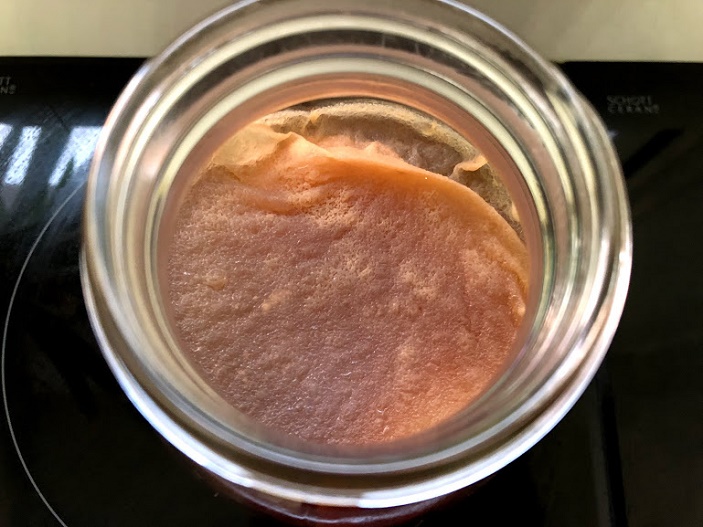
6. If 1F taste meets your personal preference, you can start drinking it – this is basic kombucha or 1F. Proceed to bottle it. This is called harvesting. To harvest, filter 1F using a strainer into prepared glass bottles – here’s a good opportunity to recycle bottles. They can be clear or dark, prefererably with a screw-on cap vs flip-top caps which tend to pop when carbonation builds up.
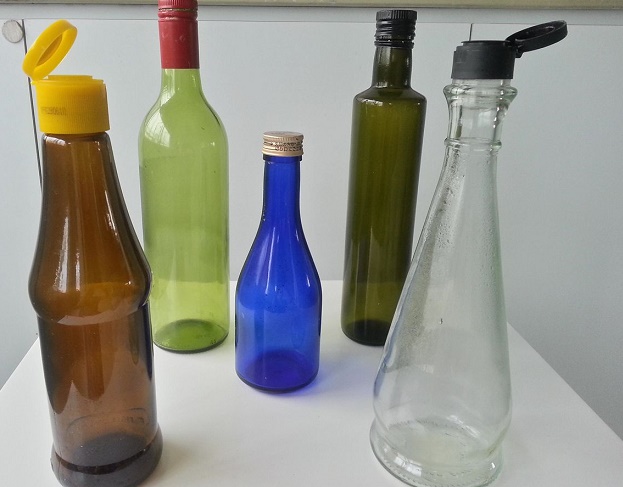
Transfer scoby and 1 cup of basic kombucha to a scoby hotel.
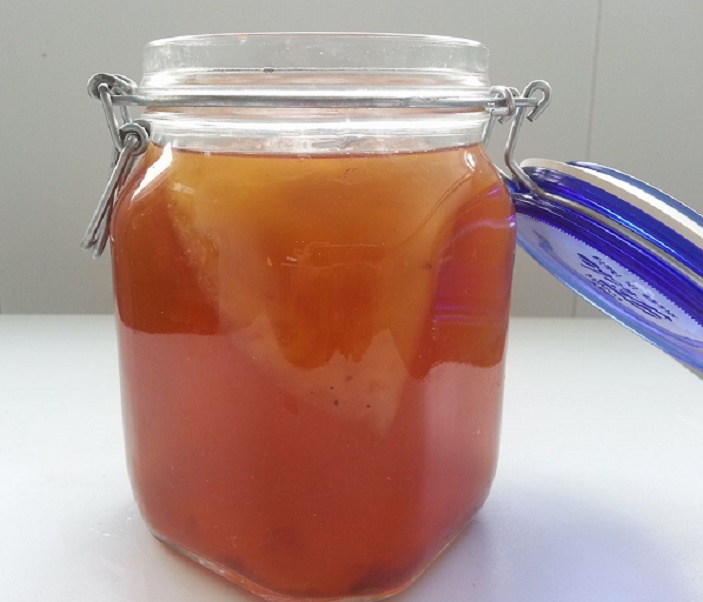
7. 2nd Fermentation: If a flavoured kombucha is preferred, proceed to 2F. Place flavouring agents (refer to B ingredients) of your choice into glass bottles. Pour 1F into bottles but do not fill it up to the top. Leave a head space of 5-6 cm above the liquid – this allows room for carbonation. Tighten bottle cap.
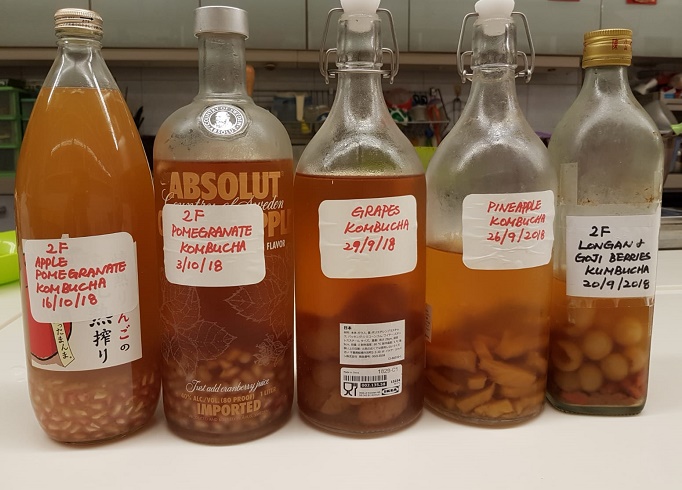
As 2F gets underway, natural yeast in the basic brew gets to feed on more sugar from fruit that’s added. Carbon dioxide formed gets trapped inside air-tight bottles. This is what makes kombucha fizzy.
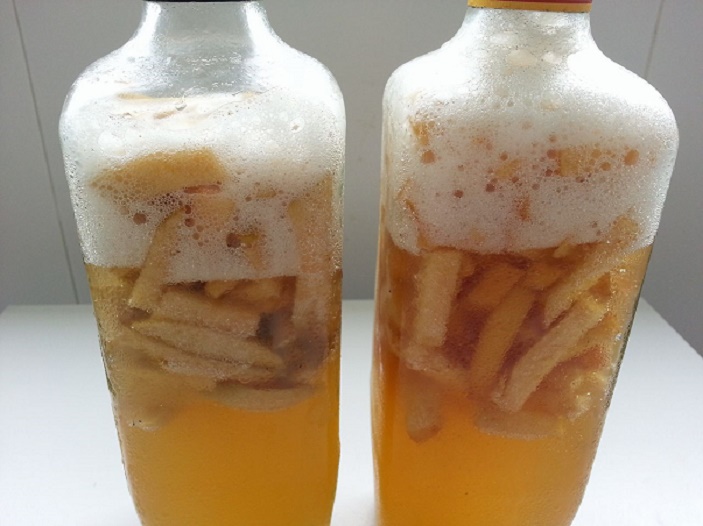
8. Leave 2F bottles on kitchen counter, away from sunlight. Allow it to ferment for 2 more days at room temperature. Next, transfer them to fridge to chill (see tip) before serving. The cold temperature in the fridge will slow down the fermentation considerably.
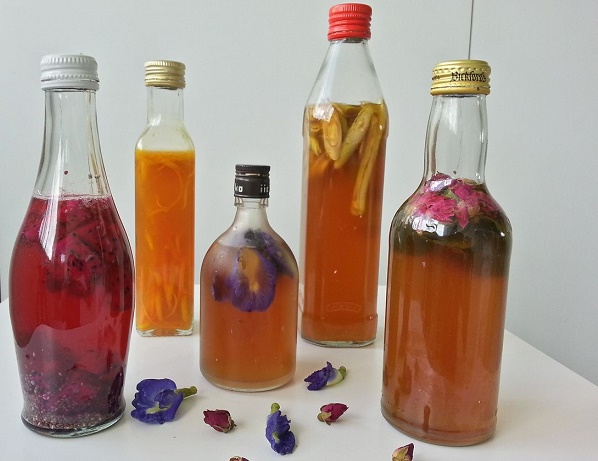
To serve, pour into serving glasses. Open the bottle slowly, opening the bottle, look out for carbonation that will bubble up – do it slowly to release some carbon dioxide. Then allow bubbles to subside before pouring.
*NOTE: Transfer baby scoby to a jar. Pour in 1 cup starter tea. This is called a scoby hotel, primarily used to store kombucha culture. Retain it for subsequent brews. To maintain scoby hotel, feed it once a month with sweetened black tea if you are not fermenting actively. Photo shows a larger scoby (right) and baby scoby.
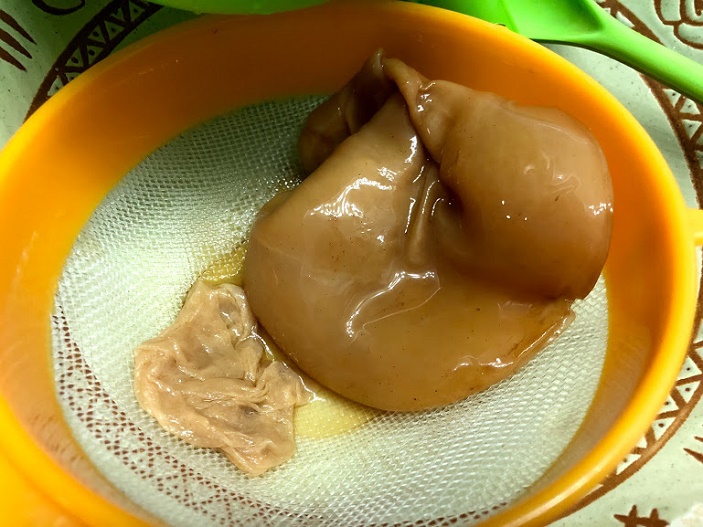
TIP: Flavourings can be used singularly e.g. apple kombucha. Otherwise, let your imagination rule. It can be a combination of complementary flavours e.g. from left: dragonfruit and chia seeds, orange and carrot, butterfly pea flowers, lemongrass and ginger, and rosebuds and mint (see main photo).
TECHNIQUE: During the second fermentation, tilt bottles once in a while to ensure the flavouring agents are in contact with the kombucha. This prevents the formation of mould. The fuzzy layer on the surface of passionfruit brew (below) indicates it has gone off. Discard entire contents.
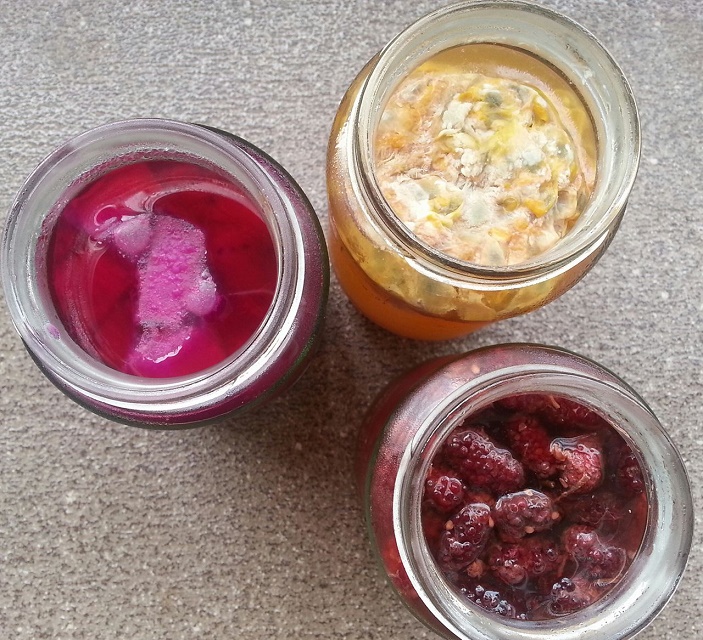
Where To Get Kombucha Brewing Kit (scoby and starter tea): This is typically shared among kombucha homebrewers. Look for donors among online communities on Facebook e.g. SG Fermentation Friends, Kefir Blessing SG and Fun with Flavourz. Recipe contributor Yvonne Gilia also conducts workshops under Fun With Flavourz.
In addition, brewing kits can also be purchased via online stores in Singapore. It costs between S$5 (scoby only) and $20 for a basic kit (scoby + starter tea).
PHOTOS: Yvonne Gilia, Catherina Hosoi and Evonne Lyn Lee
Click on www.storm.sg/food for more recipes and reviews of restaurants.
If you have a simple recipe you would like to share, do email it to whipitup@storm.sg
You Might Like To Try These Recipes:
Html code here! Replace this with any non empty text and that's it.




















